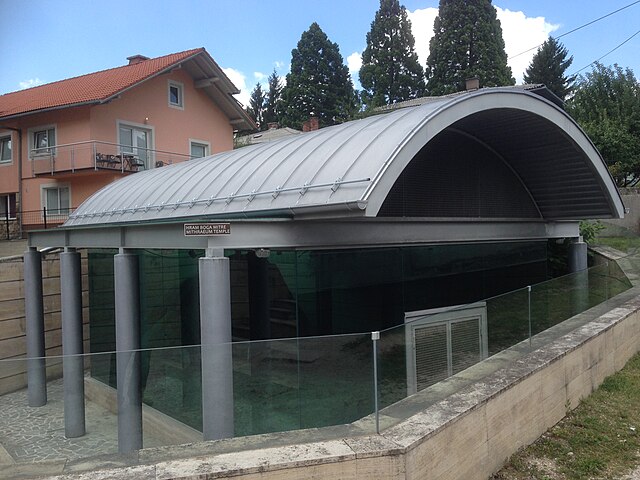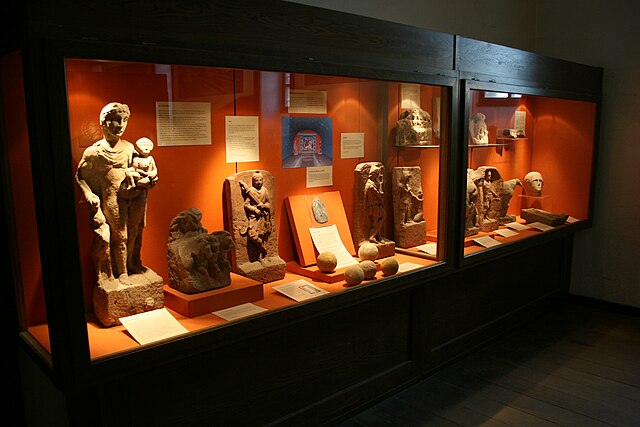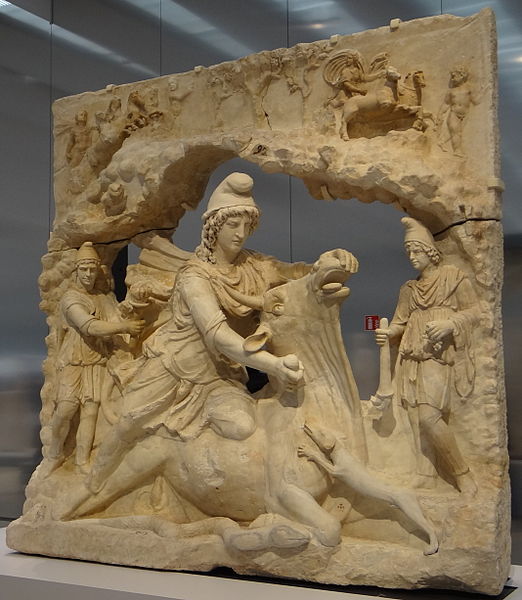A Mithraeum (Latin pl. Mithraea), sometimes spelled Mithreum and Mithraion, is a Mithraic temple, erected in classical antiquity by the worshippers of Mithras. Most Mithraea can be dated between 100 BC and 300 AD, mostly in the Roman Empire.
A Mithraeum found in the ruins of Ostia Antica, Italy
Mithraeum in Jajce renowned as one of the best preserved in-situ in Europe
How a modern history theme park imagines a Mithraeum: Museum Orientalis in the Netherlands
Finds from a Mithraeum in Stockstadt, Germany
Mithraism, also known as the Mithraic mysteries or the Cult of Mithras, was a Roman mystery religion centered on the god Mithras. Although inspired by Iranian worship of the Zoroastrian divinity (yazata) Mithra, the Roman Mithras was linked to a new and distinctive imagery, and the level of continuity between Persian and Greco-Roman practice remains debatable.
The mysteries were popular among the Imperial Roman army from the 1st to the 4th century CE.
Double-faced Mithraic relief. Fiano Romano (Rome), 2nd to 3rd century CE (Louvre Museum).
Mithras killing the bull (c. 150 CE; Louvre-Lens)
Rock-born Mithras and Mithraic artifacts (Baths of Diocletian, Rome)
Bas-relief of the tauroctony of the mysteries, Metz, France.








